By Peter Kennedy
The Republic of Liberia, a West African country with strong ties to the United States, remains one of the most geopolitically stable environments in Africa. It has had democratically elected governments since 2006. Its mining laws are based upon the well-established Australian system and pro-mining government.
Liberia was thrust into the spotlight recently when U.S. President Donald Trump met with several African leaders at the White House in Washington, D.C.
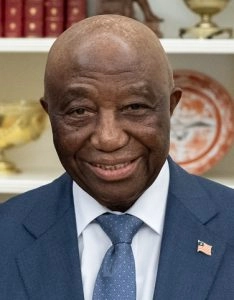 President Donald Trump greets President Joseph Nyuma Boakai of Liberia in the Oval Office, Wednesday, July 9, 2025, before a multilateral luncheon with African leaders. (Official White House Photo by Daniel Torok)
President Donald Trump greets President Joseph Nyuma Boakai of Liberia in the Oval Office, Wednesday, July 9, 2025, before a multilateral luncheon with African leaders. (Official White House Photo by Daniel Torok)
Trump made headlines when he complimented Liberian President Joseph Boakai on his English speaking and asked him where he went to school.
The Liberian leader laughed at the question but did not mention that English is the official language of Liberia, which ranks as Africas oldest republic. The country was brought to its knees by two civil wars (1989 to 1997 and 1999 to 2003) and then the devastating Ebola epidemic of a decade ago.
Liberias ties to the U.S. stem from the fact that it was founded by freed African-American slaves in 1822 before declaring independence in 1847. Thousands of black Americans and liberated Africans rescued from transatlantic slave ships settled in Liberia during the colonial era. Ten of Liberias 26 presidents were born in the U.S.
Liberias capital, Monrovia, was named in honour of Americas fifth President, James Monroe, who was a strong supporter of the American Colonization Society (ACS). The ACS was the organization responsible for resettling freed African-Americans in West Africa, which eventually led to the founding of Liberia. The citys main hospital is called the John F. Kennedy Medical Centre, named after the former U.S. President.
Liberia is situated on the coast along the southwest corner of West Africa, bordered by Sierra Leone, Guinea, and Cote dIvoire.
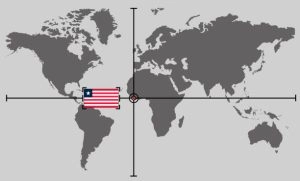 Mining industry officials say the mining sector in Liberia is not as mature as industries in other West African countries such as Burkina Faso and Mali. There are only 10 mining companies (active in Liberia) of any substance, one mining executive said.
Mining industry officials say the mining sector in Liberia is not as mature as industries in other West African countries such as Burkina Faso and Mali. There are only 10 mining companies (active in Liberia) of any substance, one mining executive said.
However, Liberia has rich mineral deposits, including iron ore, gold and diamonds. Historically mineral extraction has been a leading export and a key contributor to the gross domestic product. According to the U.S. International Trade Administration, minerals are generally exported in raw or semi-finished forms. Iron ore and gold are mined on an industrial scale while diamond deposits, which are widespread throughout the country, are primarily exploited via alluvial and artisanal mining. Iron ore mining plays a significant role in the economy accounting for 27% of total export earnings in 2022, the U.S. International Trade Administration said.
Turkish mining company Avesoro Holdings has five main operational gold mines in Liberia.
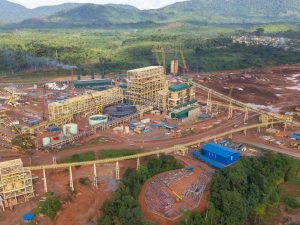 ArcelorMittal, which has had a mineral development agreement with the government since 2005, has invested heavily in the sector and has iron ore, and metallurgical coal reserves in the Mount Nimba range. Arcelor Mittal restored and operates a 243-kilometre rail line connecting its Tokadeh mine in northern Liberia to the Port of Buchanan. The company produces and exports iron ore to customers in Europe and Asia.
ArcelorMittal, which has had a mineral development agreement with the government since 2005, has invested heavily in the sector and has iron ore, and metallurgical coal reserves in the Mount Nimba range. Arcelor Mittal restored and operates a 243-kilometre rail line connecting its Tokadeh mine in northern Liberia to the Port of Buchanan. The company produces and exports iron ore to customers in Europe and Asia.
Pasofino Gold Ltd. [VEIN-TSXV, EFRGF-OTCQB, NO7A-FSE] CEO Brett Richards describes Liberia as one of the most collaborative and jurisdictions for mining in all of Africa. I have worked in 12 countries and Liberia is by far the best, said Richards during a recent interview with Resource World.
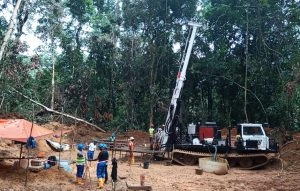
Pasofinos flagship asset is the Dugbe gold project in southern Liberia. It is located within the southwest corner of the Birminian Supergroup, which is host to most of West Africas gold deposits. Pasofino recently hired Australian company MineScope Services Pty Ltd to prepare a roadmap of work streams required to fully update and optimize a feasibility study that was released in 2022.
The work will form the first phase of a two-phase process to deliver an updated feasibility study, likely within the next several months.
In a press release containing the results of the feasibility study, the company said the Dugbe Gold Project is now a significant, viable and economically robust gold project, with substantial upside potential to improve upon the already large 4.0-million-ounce resource base.
To date, two deposits have been identified at Dugbe. They are Dugbe F and Tuzon. They were discovered in 2009 and 2011 respectively. A mineral reserve estimate was declared, based on the open pit mining of both deposits.
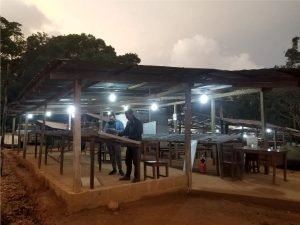 The feasibility study estimates that 2.27 million ounces of gold can be produced over a mine life of 14 years. Average annual production is forecast at 200,000 ounces for the first five years. The estimates are based on a mineral reserve of 66 million tonnes at a grade of 1.30 g/t gold or a total of 2.76 million ounces. An additional inferred resource of 67,000 ounces located within the FS pit and immediate sidewalls is not included in the reserve estimate.
The feasibility study estimates that 2.27 million ounces of gold can be produced over a mine life of 14 years. Average annual production is forecast at 200,000 ounces for the first five years. The estimates are based on a mineral reserve of 66 million tonnes at a grade of 1.30 g/t gold or a total of 2.76 million ounces. An additional inferred resource of 67,000 ounces located within the FS pit and immediate sidewalls is not included in the reserve estimate.
The start-up capital cost is pegged at US$435 million, excluding owners costs for a 5.0 million-tonne per year processing plant. Life-of-mine all-in-sustaining costs are expected to be US$1,005 an ounce.
The operating expenditure estimated in the 2022 feasibility study illustrates a highly economic project at US$1,700 an ounce, the company has said. However, it is worth noting that gold is currently trading well above that level at US$3,425.16 an ounce (July 22, 2025). At this gold price the project will generate US$450 million in annual cash flow, Richards said. However, it is not expected that the current update to the 2022 feasibility study will change the throughput rates that are estimated in the study.
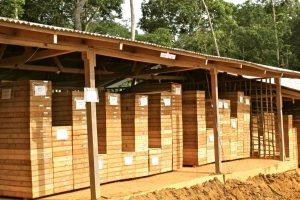 Pasofino holds a 100% interest in the Dugbe gold project, subject to a 10% carried interest held by the government of Liberia. Nioko Resources Corp., a unit of an investment company incorporated by Coris Bank International of Burkina Faso, controls the 50.8% equity stake in Pasofino that was previously owned by Hummingbird Resources Plc. Hummingbird is now a wholly owned subsidiary of Nioko.
Pasofino holds a 100% interest in the Dugbe gold project, subject to a 10% carried interest held by the government of Liberia. Nioko Resources Corp., a unit of an investment company incorporated by Coris Bank International of Burkina Faso, controls the 50.8% equity stake in Pasofino that was previously owned by Hummingbird Resources Plc. Hummingbird is now a wholly owned subsidiary of Nioko.
On July 24, 2025, the shares were trading at 54 cents in a 52-week range of 80 cents and 37.5 cents.
Given the recent completion of the co-operation agreement with our major shareholder Hummingbird Resources/Nioko Resources, Pasofino is well positioned to and well-funded to commence updating the 2022 feasibility study in an effort to expedite the Dugbe gold project towards final feasibility study, project financing, construction and ultimately commercial production, Richards said.
Resource World Magazine Inc. has prepared this editorial for general information purposes only and should not be considered a solicitation to buy or sell securities in the companies discussed herein. The information provided has been derived from sources believed to be reliable but cannot be guaranteed. This editorial does not take into account the readers investment criteria, investment expertise, financial condition, or financial goals of individual recipients and other concerns such as jurisdictional and/or legal restrictions that may exist for certain persons. Recipients should rely on their own due diligence and seek their own professional advice before investing.


